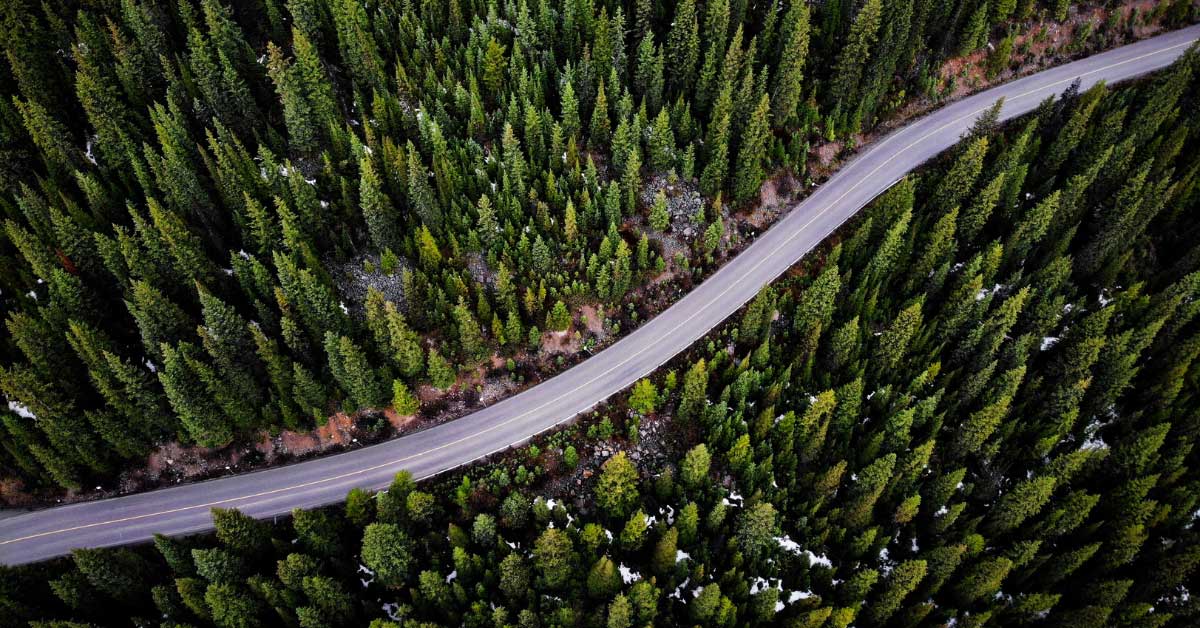Canada’s clean energy market is expanding rapidly
As a result of advancements in renewable energy technology, the industry is expected to accelerate in the coming years, particularly in grid-integration technology development and diversification of clean energy generating sources. Similarly, the GDP of the clean energy sector is expected to expand by 58% by 2030[1]. Beyond renewable energy, Canada’s clean energy sector includes businesses and jobs that help reduce carbon emissions by generating opportunities and economic growth in clean energy transportation, infrastructure, and the development of low-carbon technologies.
In Canada, Alberta and Ontario both offer competitive energy generation and retail markets. Although it has the third-largest oil reserve in the world, Alberta has reduced its carbon emissions by more than 50% in just 3 years.[2]
Clean Energy Growth in Canada:
Strong government support for renewable-based power generation is expected to bolster market growth in the clean energy sector. In the year 2021, the Ministry of Environment and Climate Change implemented a plan to phase out coal-fired electricity by 2030 and achieve carbon neutrality by 2050[3], creating opportunities for deeper penetration of renewables in the energy sector.
As of 2020, wind technology held a share of 13% in the renewable electricity mix and 3% in the overall electricity generation mix.[4] This growth is a result of reduced costs and technological development. In the year 2021, 677 megawatts (MW) of new wind energy and 288 MW of new utility-scale solar energy has been commissioned in Canada. The provinces most involved in the growth of wind energy are Ontario, Quebec, and Alberta. As of 2022, Canada has planned for around 31 more wind projects in the coming years.
Clean Energy Growth in Alberta:
In Alberta, about 89% of electricity is produced from fossil fuels – 36% is from coal and 54% is from natural gas. The remaining 10% is produced from renewables, such as wind, hydro, and biomass. Under Alberta’s climate change legislation, emissions from coal-fired generation will be phased out by 2030. However, power generators in Alberta (including Capital Power, Heartland Generation, and TransAlta) have decided to advance plans for coal-to-gas conversions with most coal-fired facilities expected to switch by 2022, and all by 2024.[5]
Significant growth is expected for wind and solar generation in Alberta, with over 2000 MW of new projects expected between 2019 and 2023. The 465 MW Travers Solar project, the largest solar installation in Canada, is under construction and is expected to be operational by late 2022.
Government Incentives in Alberta[6]:
The Government of Alberta is providing grants and incentives to businesses to advance a wide range of pioneering projects that reduce emissions, cut costs, and create more jobs in the clean-tech industry. They also offer financial incentives and rebate programs to encourage homeowners and support their investments in solar energy and other energy efficiency measures.
| Government | Program | Incentive |
|---|---|---|
| Federal | Full Expensing for Clean Energy Equipment | Enables renewable energy and energy conservation assets (such as solar energy, battery storage) to be depreciated in full in the year that they are brought in service. |
| Federal | Investing in Canada Infrastructure Program | Alberta is receiving $1.25 billion for green infrastructure projects over 10 years (2018-2028). |
| Provincial | Energy Savings for Business | Helps businesses improve their efficiency and reduce emissions by funding for commercial cost and energy-saving technologies. |
| Provincial | Electric Utilities Act | Allows Albertans to meet their own electricity needs by generating electricity from renewable or alternative energy sources. |
| Provincial | Alberta Innovates Technology Innovation and Emissions Reduction Economic Recovery Program | Reward of $50 million to companies investing in clean energy and emission reduction technologies. |
| Municipality(Edmonton) | Canada’s Greener Homes Grant | Rebate up to 100% of the total Solar investment made by the homeowner. |
| Municipality(Edmonton) | Electric Vehicle (EV) Strategy | Encourages people to own electric vehicles, prepare the path for electrifying transportation of personal vehicles and reduce greenhouse gas emissions. |
| Municipality(Edmonton) | Energy Benchmarking Program | Improves building energy efficiency and greenhouse gas reduction by providing owners with information about their buildings. |
| Municipality(Edmonton) | Energy Retrofit Accelerator | Rebate program that provides financial incentives for energy efficiency upgrades to commercial and institutional buildings. |
What makes Alberta’s energy industry special in comparison to the rest of Canada?[7]
Alberta is leading the Canadian market in energy decarbonization, having already lowered the carbon intensity of its electricity grid and oil and gas sector significantly. By 2023, Alberta’s power generation will be coal-free, and the electricity grid will emit approximately 20 megatons of GHG emissions per year, less than half of what it did in 2015.
Throughout this transformation, Alberta’s deregulated market ensures that the province remains a low-cost electricity jurisdiction. Alberta’s carbon levy, the first carbon tax in Canada, was adopted In 2007, making Alberta the first jurisdiction in North America to mandate greenhouse gas reductions from significant industrial emitters.
Clean Energy Forecast in Alberta:
Alberta’s market-based grid and unique geography make it an attractive setting for utility-scale wind and solar projects, and it allows companies to purchase renewable electricity at a competitive rate. The total capacity of renewable energy sources in the province is 23%. According to the Canada Energy Regulator (CER), that figure is projected to rise, fuelled in part by increased investment in renewable energy projects.[8]
In Alberta, 61 solar projects are now under construction and are scheduled to be completed by the middle of this decade. According to Alberta’s Associate Minister of Natural Gas and Electricity, more than $2 billion in “utility-scale renewable energy projects” have been announced since 2019 without Alberta taxpayers footing the price.[9]
RBC forecasts that investment in Alberta’s renewable energy sector will continue to increase. It refers to the Travers Solar Project, which is now being built in Vulcan County, southeast of Calgary. More than a million solar panels will be used in the project, which will provide enough electricity to power 150,000 households. The forecast stated, “We believe Alberta is well-positioned to attract more investments of this type and size in the years ahead.”[10]
Skyline Clean Energy Fund in Alberta:
Skyline Clean Energy Fund (SCEF) chose to acquire assets in Alberta because of its thriving clean energy industry. The Fund recently purchased a biogas facility in Lethbridge that can process up to 130,000 tonnes of organic waste per year. This facility is Canada’s only biogas plant permitted to properly process SRM (Specified Risk Materials) which it does through a thermal hydrolysis process.
SCEF continues to evaluate several projects in Alberta as potential acquisitions, which are expected to provide the Fund with strong and stable cash flows.
What attracted SCEF to Alberta?
As a result of the Renewable Energies Act, Alberta is experiencing a surge in renewable energy installations. The Renewable Energies Act, which was passed in 2017, is now Canada’s largest renewable energy policy[11]. Under the act, Alberta is targeting that 30% of its electrical energy will come from renewable sources such as solar, wind, and biogas by 2030. With the significant increase in renewable energy installations since 2020, Alberta is currently on course to meet these targets.
Alberta also has the highest solar potential in Canada, with some regions of southern Alberta offering 10-20% higher solar efficiency potential than the rest of the country.[12] When combined with an open and deregulated market, solar energy can compete on an equal footing with other traditional energy sources, making Alberta an attractive market for Skyline Clean Energy Fund.
How to access Alberta’s clean energy market:
Alberta’s energy market is open and competitive, and is quickly transitioning to non-fossil fuel technologies. The market allows flexible technology and financial solutions to provide options for the end-consumer. Renewable energy projects are able to sell into different markets and monetize several value stacks, helping owners to optimize their value and revenues. The capacity to generate renewable energy credits and carbon tax offsets is an important market driver in Alberta. These credits or offsets can be monetized by selling them to large GHG emitters, benefitting from the carbon tax market.
Skyline Clean Energy Fund continues to invest in clean energy technology and solutions to help Canada reach its carbon emissions reduction targets. If you’re interested in investing in Canadian clean energy assets, reach out to us or connect with a Skyline Wealth Management advisor to discuss your investment goals and learn how you can invest in this sustainable fund.
References
[1] The energy transition – clean energy canada. (n.d.). Retrieved May 19, 2022, from cleanenergycanada.org
[2] The energy transition – clean energy canada. (n.d.). Retrieved July 29, 2022, from cleanenergycanada.org
[3] Canada, S. (2022, May 19). Government of Canada. Canada.ca. Retrieved July 29, 2022, from www.canada.ca
[4] Canada Renewable Energy Market: 2022 – 27: Industry share, size, growth – mordor intelligence. Canada Renewable Energy Market | 2022 – 27 | Industry Share, Size, Growth – Mordor Intelligence. (n.d.). Retrieved May 19, 2022, from www.mordorintelligence.com
[5] Government of Canada, C. E. R. (2022, April 25). Canada energy regulator / Régie de l’énergie du Canada. CER. Retrieved May 19, 2022, from www.cer-rec.gc.ca
[7] Energy & Clean Tech. Invest Alberta. (2022, July 13). Retrieved July 29, 2022, from investalberta.ca
[8] Government of Canada, C. E. R. (2022, May 24). Canada energy regulator / Régie de l’énergie du Canada. CER. Retrieved July 29, 2022, from www.cer-rec.gc.ca
[9] CBC/Radio Canada. (2022, January 1). Wind and solar: A robust forecast for renewable energy in Alberta | CBC news. CBC news. Retrieved July 29, 2022, from www.cbc.ca
[10] CBC/Radio Canada. (2022, January 1). Wind and solar: A robust forecast for renewable energy in Alberta | CBC news. CBC news. Retrieved May 19, 2022, from www.cbc.ca
[11] Renewable energy legislation and reporting. Alberta.ca. (n.d.). Retrieved July 29, 2022, from www.alberta.ca
[12] Thiessen, R. (2021, June 11). Solar panels in Alberta: A worthwhile investment. Empower Energy Solar. Retrieved July 29, 2022, from empowerenergysolar.ca


